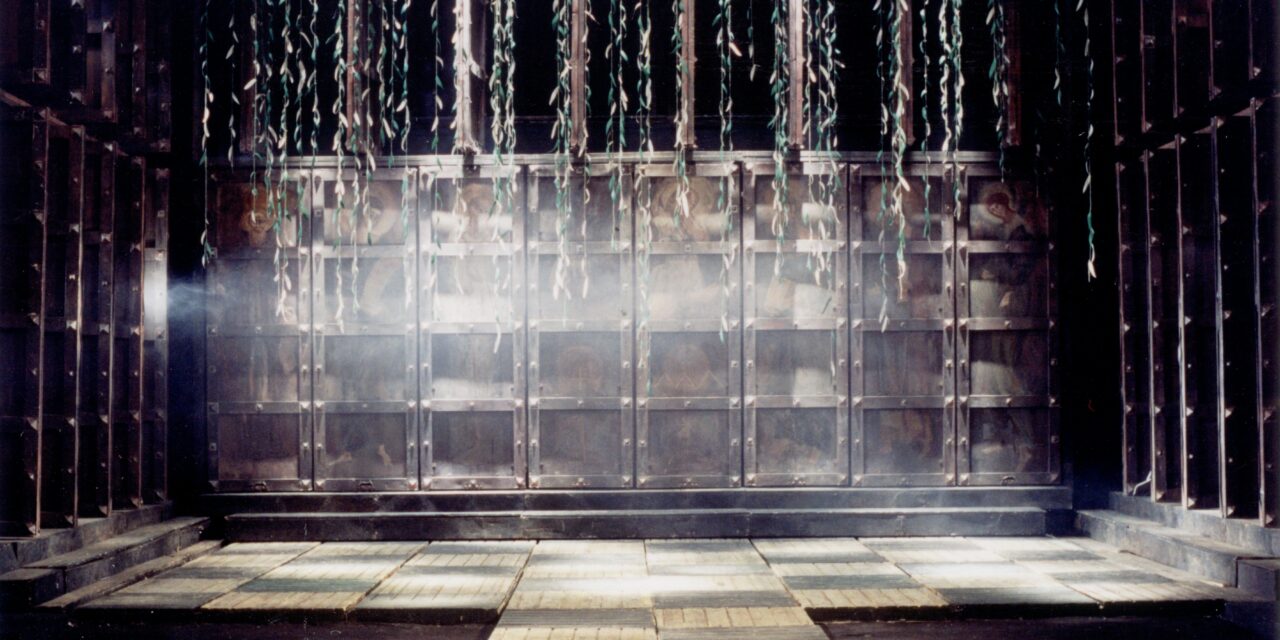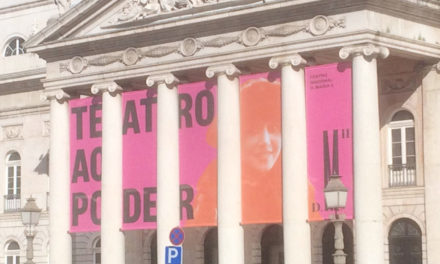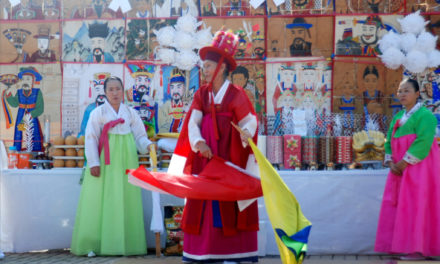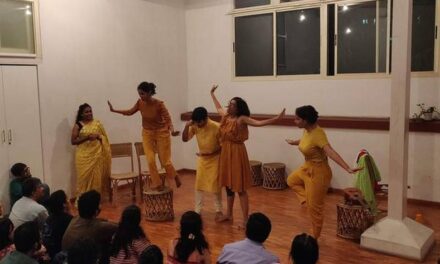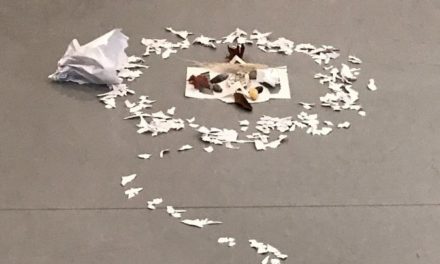Russian theatre historian Viktor Beryozkin said that while painter deals with canvas, paints, and brushes, a sculptor with marble and a chisel, scenographer’s main medium is a stage space. Stage designer’s palette is made first and foremost of intangible things (such as space, light, time and movement) that could be revealed only during the performance.
There are many approaches to define a theatrical space. The most common is a scenographical approach, which marks a “demarcation” between stage and auditorium spaces. Ksenia Vozgrivtseva notes: “The scenographic approach was formed at the beginning of the 20th century. It was the time of extensive experiments with the use of space in the theatre. Konstantin Stanislavsky, Vsevolod Meyerhold, Alexander Tairov, Evgeny Vakhtangov – each offered his own type of theatre space organization. The Stanislavsky’s approach has become a “standard” for the vast majority of new theatres. Stanislavsky’s model implies a clear separation of the stage and the auditorium, separated by the so-called invisible “fourth wall”. The stage determines the existence of the auditorium, and the auditorium is lined up by the action of the so-called “fourth wall”.
French theatre semiotician Patrice Pavis said that stage space is the receptacle of the art space. In the theater, the viewer is invariably located outside the artistic space (except for the experimental theater). Except for an experimental theater the audience is always located outside the artistic space. Scenography, besides its own specific function, also marks the border of the stage space.
Stage space organization depends on both theater space (technical capabilities of a theatre building or any other place selected for a performance), and artistic space (the implied possibilities of dramaturgy and artistic ideas of production crew). As the theatre art itself, the theatrical space is multidimensional. Any theatrical form testifies to the artist’s attitude to the real world, and to the world he creates on stage. When studying scenography it is relevant to emphasize the individual vision of the works of a particular artist. The space that each artist creates is man-made and changeable. And the value of each stage design is that it was created by a certain scenographer.
According to Patrice Pavis, theatre theory identifies the several types of stage spaces. A space of a classical tragedy is a neutral communicating place that does not characterize the environment but supports the character morally and intellectually. A romantic space is intended to illustrate the unreal world. A naturalistic space imitates the real world as much as possible. It is concentrated in the environment where the characters act. A symbolist space demonstrates the place of action, stylizes it under a subjective or hallucinatory world with the other Modus Operandi (as in Adolphe Appia’s scenographic projects). This stage space type rejects any specificity in favor of making an atmosphere of global unreality. It makes the set as a symbol – a visual metaphor, that uncovers hidden messages of the play. And the last one is an expressionist space, which is allegorically made to show a deep crisis, which affects the ideological and aesthetic consciousness of the society. It is clear that each of the mentioned stage space types is nothing but an artistic tool since every stage performance requires its own solution of stage space.
The remarkable phenomenon of contemporary Belarusian theatre is the scenography projects of Viktor Timofeev. One of his most intriguing works is the set design for Vladimir Korotkevich’s psychological detective King Stach’s Wild Hunt staging at the Yanka Kupala National Academic Theater (director Vladimir Savitsky). Timofeev has created a minimalistic yet complex metaphoric stage environment that gravitates towards expressiveness of figurative means and concreteness of every detail. He has put a transformable wooden platform in the center of the stage. This platform visually increases the size of a small stage and expands the possibilities of staging. For the heroes of the play, the platform serves a role of a large table, then it becomes a hall, where they are dancing during the ball, and later it becomes indefinite mystical space of the following scenes. A brown-black color scheme of the stage production becomes highly-saturated during the expressive scenes. The most expressive and decisive scene of the play – the ball scene was solved in an unexpected way, moving away from previous visual aesthetics. King Stach’s Wild Hunt directed by V. Savitsky with set design by V. Timofeev’s has become a significant phenomenon for the Y. Kupala National Academic Theater, as well as for the contemporary Belarusian theatre.
Belarusian theatre scenographers strive for a new non-traditional mastering of stage space. This can be said about Alla Sorokina’s stage design solutions in People live there and Insidiousness and love (both staged at Yanka Kupala National Academic Theater), and Woe from Wit (staged at Gorky National Academic Drama Theater), works of Darya Volkova (Tristan and Isolde, and Solomeya staged at Yanka Kupala National Academic Theater), and Tatyana Sokolovskaya’s set in Dogs (staged at Grodno Regional Drama Theater) etc.
Contemporary Belarusian stage design school is formed by Olga Matskevich, Valentina Pravdina, Andrey Merenkov, Igor Anisenko, Marina Timofeeva, Olga Scherbinskaya – students of the renowned scenography master Boris Gerlovan.
The scenographic project by Olga Scherbinskaya for the play Master and Margarita (by M. Bulgakov), which consists of a scale model of the set, sketches of stage drawings and costumes of characters, is highlighted by an unexpected construction of the stage space. The mise en scenes are captured in four main sketches: The Beginning, Variety, Meeting with Azazello and The Ball of the Full Moon.
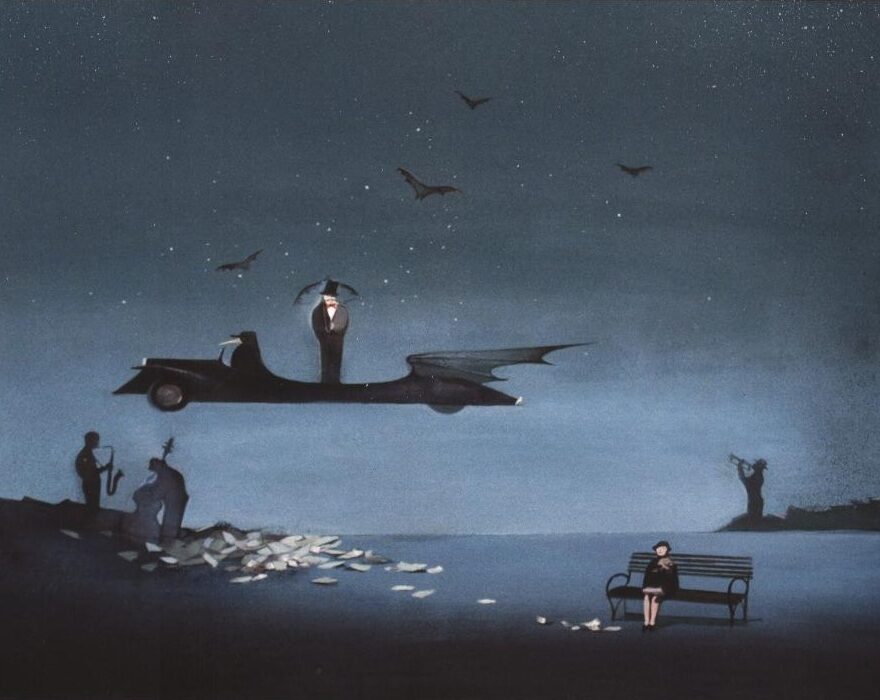
Set design sketch for the meeting with Azazello scene by Olga Scherbinskaya for the play Master and Margarita. Photo credit Veronika Yarmolinskaya
The scenographic project attracts with the immensity of the material, but also with the originality of the staging idea of the famous Bulgakov’s literary work. The stage designer offers a truly spectacular and mystical implication of the play. The dominating color is black. It helps to emphasize the design ideas of the artist, making the scenery more spectacular on a black background.
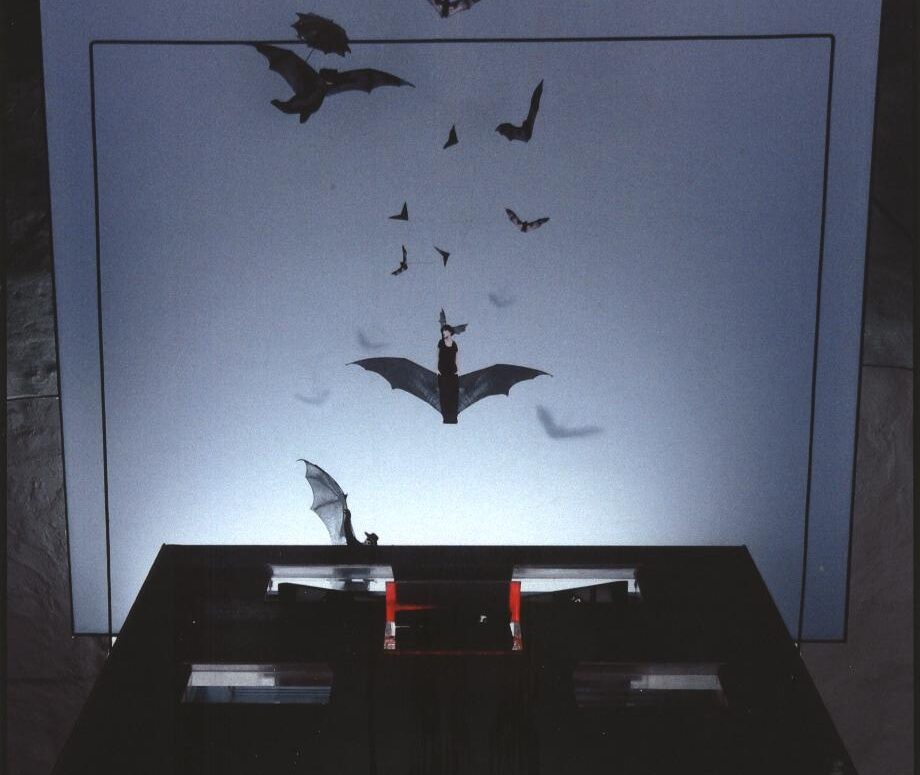
Scale model of Master and Margarita set design by Olga Scherbinskaya for the play Master and Margarita. Photo credit Veronika Yarmolinskaya
The set design creates an atmosphere of a fragile and shadowy world on stage. Though the performance is decorated mainly in black color, set does not look gloomy or pessimistic. The color shceme of black shades is intended to show that the Master and Margarita have chosen a world of darkness. But despite this choice, they remain to be highly sincere characters. Stage space becomes lively and exalted with the help of advanced lighting. The light score makes the faces and costumes of actors bright and expressive, it focuses attention on the objects and details that have been accurately introduced into the performance. A screen is installed on the back of the stage, which enables demonstration of projection mise en scenes, which also visually and aesthetically expand the stage space.
The costumes of the characters reflect the inner state of the characters as well as their tempers. Margarita’s dress is dark, with the glowing lowered wings as the only decoration. The face of the character is covered with white powder. It becomes detached and almost inanimate, the one that is prepared for the afterlife. Margarita’s image is inseparable from the sketches of the scenery of the play. Her image is present in each drawing both as the main character and as a symbol of the mysterious time of the famous Bulgakov’s novel.
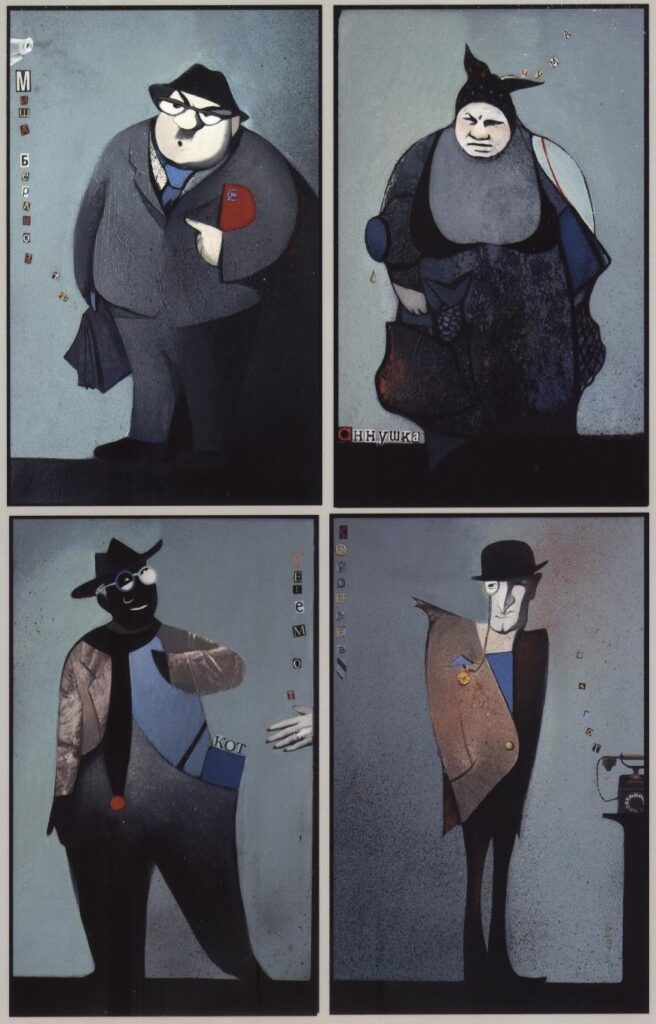
Costumes sketches for Master and Margarita play by Olga Scherbinskaya. Photo credit Veronika Yarmolinskaya
This few examples of scenography solutions show the diversity, which could be seen on Belarusian stages. Deep study of the stage design leads to an understanding of the theater as a broad phenomenon that absorbs the specifics of the many-sided cultural space.
Translation: Alexander Mantush
This post was written by the author in their personal capacity.The opinions expressed in this article are the author’s own and do not reflect the view of The Theatre Times, their staff or collaborators.
This post was written by Veronika Yarmolinskaya.
The views expressed here belong to the author and do not necessarily reflect our views and opinions.

